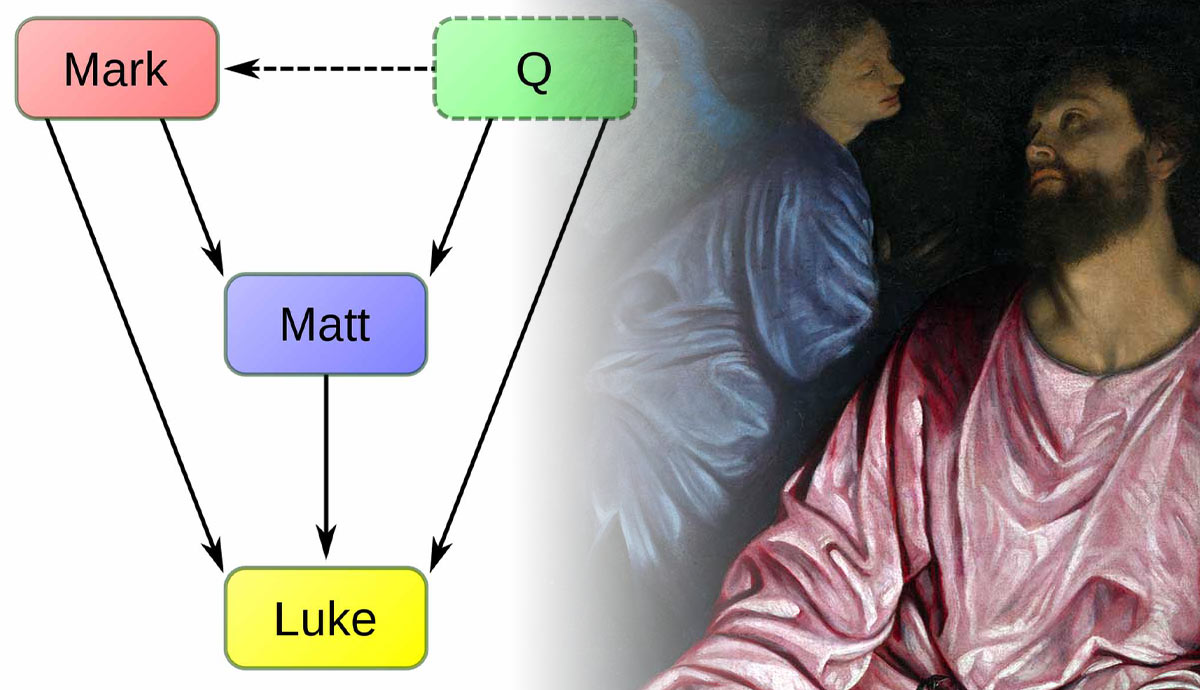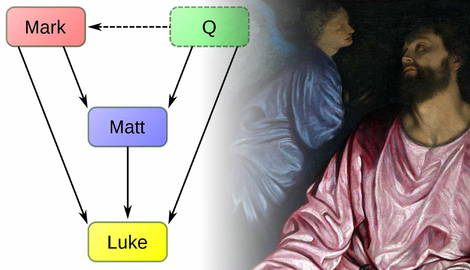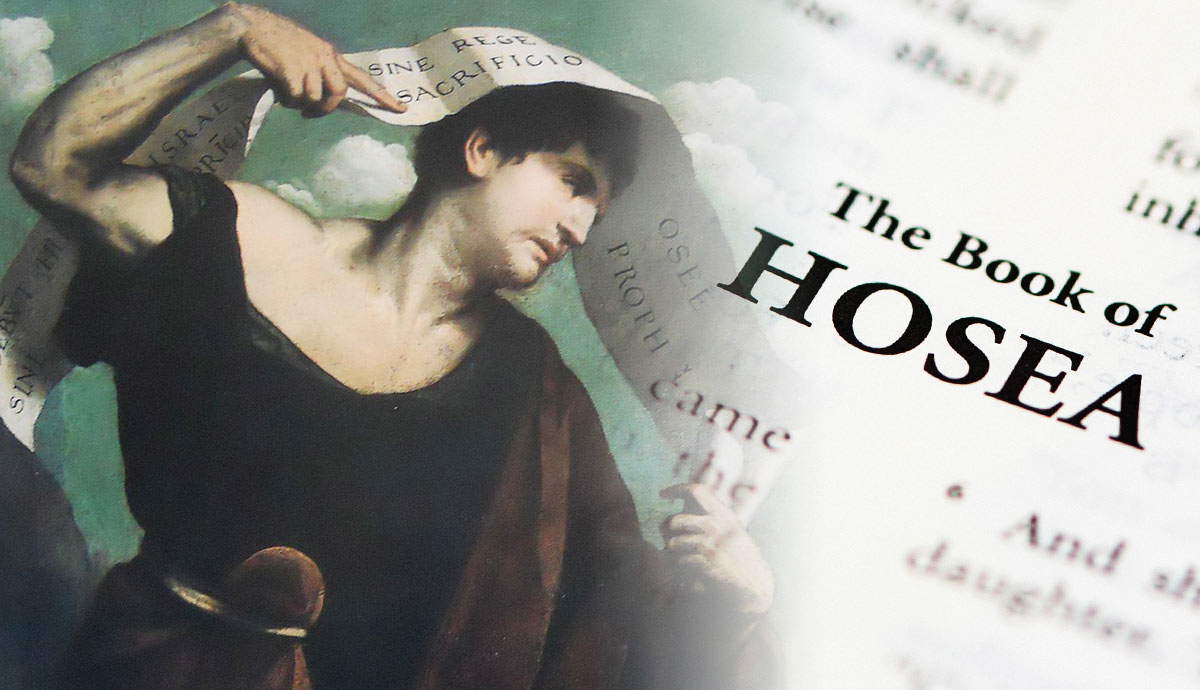
The Q source hypothesis is a prominent theory in New Testament scholarship that seeks to explain the literary relationship between the synoptic Gospels of Matthew, Mark, and Luke. According to this hypothesis, there was a hypothetical written source, known as “Q” (short for the German word “Quelle,” meaning “source”), which contained the sayings and teachings of Jesus that were shared by Matthew and Luke but are absent in Mark.
The Synoptic Problem

Scholars refer to the gospels of Matthew, Mark, and Luke as the synoptic gospels. The term “synoptic” comes from two Greek words: syn, meaning “together,” and opsis, meaning “seeing.” It refers to the fact that these three gospels share a similar structure, tell the same stories, and parallel each other in content and wording to a large extent.
Consider the following passages from each of these gospels:
Matthew 3:16-17
“And when Jesus was baptized, immediately he went up from the water, and behold, the heavens were opened to him, and he saw the Spirit of God descending like a dove and coming to rest on him; and behold, a voice from heaven said, ‘This is my beloved Son, with whom I am well pleased.’”
Mark 1:10-11
“And when he came up out of the water, immediately he saw the heavens being torn open and the Spirit descending on him like a dove. And a voice came from heaven, ‘You are my beloved Son; with you I am well pleased.’”
Luke 3:21-22
“Now when all the people were baptized, and when Jesus also had been baptized and was praying, the heavens were opened, and the Holy Spirit descended on him in bodily form, like a dove; and a voice came from heaven, ‘You are my beloved Son; with you I am well pleased.’”
The similarity of the texts is undeniable, and this is one of many examples.
Scholars have long held that Mark was the first of the gospels, dated to around 65-70 CE. Matthew and Luke are dated at least a decade, if not two later, sometime between 80 and 95 CE. It is highly likely that Matthew and Luke had copies of the Gospel of Mark at their disposal when they authored their versions.

Having Mark as a mutual source for Matthew and Luke would explain their many similarities. What it does not explain, however, is the literary similarities between Matthew and Luke that do not appear in Mark. These similarities are attributed to Jesus, but never to any narrative.
The parallels unique to Matthew and Luke gave rise to the theory that these gospel authors made use of a second source for their material, resulting in the equivalencies in their work. Scholars called this hypothetical second source “Q.”
The Q Source Hypothesis

The “Q” in “Q source hypothesis” comes from the first letter of the German word “quelle” which means “source.” Given the similarities between Matthew and Luke, this source must have consisted of the sayings of Jesus. The lack of narrative similarities in these two gospels makes it unlikely that Q had a narrative framework.
The Q source hypothesis developed in the late 18th century and early 19th century as a means of explaining the parallels between Matthew and Luke. Two German biblical scholars, particularly Johann Gottfried Eichhorn and Heinrich Julius Holtzmann were prominent in the development of the Q source hypothesis, postulating that a proto-gospel, probably written in Hebrew or Aramaic, was the source for the three synoptic gospels. In the mid-1920s, with the work of B. H. Streeter, the theory seems to have gained traction.

This original source may have been an oral tradition on the sayings of Jesus that the authors of Matthew and Luke codified. Alternatively, their capturing of the Q sayings in their gospels could have resulted in the original written Q source becoming redundant as these gospels expanded on and provided context for these sayings.
Various scholars have made attempts to reconstruct Q by analyzing Matthew and Luke and using the parallels to identify the original material. The process involved, among other things, identifying distinctive characteristics such as theological emphasis, literary style, and cultural context. By its very nature, it remains a speculative endeavor. Scholars also regularly investigate parallels with other Early Christian sources such as the Didache, the Gospel of Thomas, and similar works that contain sayings of Jesus.
Though no evidence for Q exists, there are several reasons why such a source is likely. First, there are overlaps in the wording and the order of the sayings and teachings between Matthew and Luke, particularly in passages not found in Mark, which suggest a common origin. This includes a consistent thematic focus on ethical teachings, wisdom sayings, and teachings about the kingdom of God.
Secondly, statistical analysis done by Markos Papapetrou showed quantitative support for the existence of Q by demonstrating statistically significant patterns of verbal agreement between Matthew and Luke in passages not found in Mark.
Thirdly, variations in order and wording make it unlikely that Luke copied from Matthew and more likely that they shared a common source. Each of them adopted the original material to fit their style, narrative, and focus.
Fourth, Matthew and Luke parallel other early Christian works. They may not have used Q as a source directly, but they indicate a broader circulation and influence of Jesus’ teachings beyond the canonical gospels.
Variations and Alternatives of the Q Hypothesis

One variation on the Q source hypothesis proposes that Mark also made use of Q or a similar proto-gospel. This is an unorthodox approach since the original hypothesis had Q as a source for similarities between Matthew and Luke that exclude similarities with Mark. The three initial Bible passages referenced in this article show some sayings are shared among all three. This idea of a proto-gospel as the source for all three synoptic gospels dates back as far as the 1800s.
Scholars have come up with alternatives to the Q source hypothesis to explain similarities in the gospels of the different authors. The Farrer hypothesis proposes that Matthew used Mark as a source, but Luke used both Mark and Matthew as a source. This approach is simple and negates the need for a Q source altogether.
Arguments Against the Existence of Q

Some scholars argue that the similarities between Matthew and Luke can be adequately explained by literary dependence on each other or on oral tradition, without the need to posit a separate written source like Q. Similarly, scribal traditions may also have resulted in literary parallels between Matthew and Luke and would provide a much simpler explanation than the Q hypothesis.
A weakness of the Q source hypothesis is the absence of any textual evidence despite extensive scholarly efforts to find it. The entire hypothesis is based on statistical and literary analysis and inference. It adds complexity to the synoptic problem by introducing an additional layer of tradition, transmission, and composition, which may not be warranted given the available evidence (or rather lack thereof).
The lack of any textual evidence for Q leads to a variety of proposed reconstructions. It results in a lack of consensus which undermines the reliability and validity of the hypothesis.
What Q Lacks

From reconstructions of Q, it is evident that it does not contain the birth, crucifixion, and resurrection narratives that are at the core of the gospels — the “good news.” As such, Q could not be the source of the gospels but could be a source of the sections of the gospels that relate to the sayings of Jesus.
With the abundance of manuscripts and indirect evidence for the New Testament and other early Christian works, it is hard to imagine that a source as prominent as Q would leave no trace of evidence. That said, the reasoning behind the likely existence of a single source—the parallels in Matthew and Luke—seems reasonable.
Conclusion

The gospels of Matthew, Mark, and Luke have much in common, resulting in scholars referring to them as the “synoptic gospels.” While most scholars believe Matthew and Luke used Mark as a source, similarities in Matthew and Luke gave rise to speculation that these two gospels share a second source that is absent in Luke.
Scholars have not been able to verify this hypothesis with manuscript evidence. While the existence of the Q source remains a hypothesis, there were good reasons for positing a single source for the parts of Matthew and Luke that parallel one another but are absent in Mark. From a statistical-analytical perspective, such a source is likely. It would explain the similarities between the two later synoptic gospels and even the parallels with other early Christian sources.
On the other hand, it would also make for a more complex explanation than other scholars have proposed, violating the principle of Occam’s Razor. Alternatively, Mark could have been the source for Matthew, and Matthew for Luke, which is a much simpler explanation than the Q hypothesis.
The lack of reference to the essentials of the gospel (the birth, death, and resurrection of Christ) makes Q an unlikely source for the origin of the gospels themselves, but it would qualify as a source for the sayings of Jesus in the gospels of Matthew and Mark.










